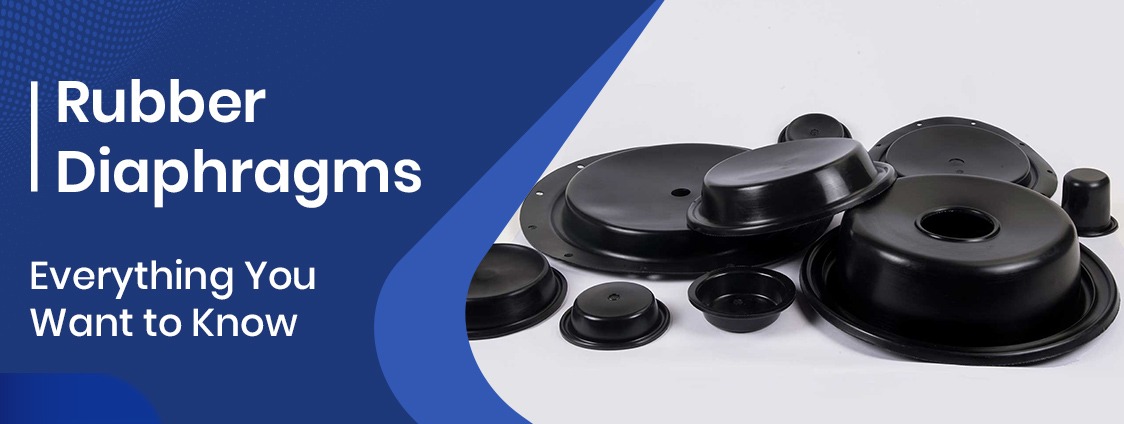Rubber Diaphragms: Everything You Want to Know
A rubber diaphragm is used to solve sealing problems by serving as a flexible barrier between two chambers. This prevents the movement of contaminants or fluids from one chamber to another. Rubber diaphragms are flexible membranes that are usually circular in shape.
They can be used to separate two entities that should not be mixed for the application or equipment to run smoothly. These include:
- Two liquids
- Two gases or
- One liquid and one gas
In simple terms, rubber diaphragms prevent unwelcome transmission of liquids or gases between two places. Many people wrongly presume that rubber diaphragms are simply thin rubber pieces. In reality, diaphragms are available in a wide range of sizes and shapes. The thickness of a rubber diaphragm depends on its diameter and the amount of flexibility required for its intended application.
The Working Principle of Rubber Diaphragms
Difference in pressure causes a diaphragm to go up into a chamber or below into another chamber. This facilitates a degree of motion between a moving and stationary part. Since rubber diaphragms feature a low permeability to gases and fluids, they can maintain media separation on both sides of the diaphragm.
Rubber diaphragms can also maintain consistent difference in pressure between the media and provide gasket functionality within an instrument’s flange.
Benefits of Rubber Diaphragms
Rubber diaphragms are versatile and durable sealing solutions that are usually manufactured to the highest industry specifications. They are designed to offer excellent flexibility so that applications in the real world can run smoothly and without hiccups.
Rubber diaphragms also come with high chemical and temperature resistance, ensuring that they can be used in the harshest of environments. They are available for consumers after undergoing stringent in-house testing to ensure they can
The Making of Rubber Diaphragms
Rubber diaphragms are usually made of materials such as:
-
Natural Rubber
-
Neoprene®
-
Silicone
-
EPDM
-
Nitrile (NBR)
Diaphragms made entirely of rubber are homogeneous in nature and are usually thin. In some scenarios, such diaphragms are reinforced with fabric such as cotton to boost durability.
The molding of elastomer and rubber compounds to create rubber diaphragms is done by using pressure and heat to get the desired shape. Transfer, compression and injection methods are used to mold elastomer-based diaphragms.
Application of Rubber Diaphragms
The versatility offered by rubber diaphragms ensure that they are used in a wide range of industrial applications. These include pumps, control devices, meters, regulators, and other specialist equipment.
Many manufacturers work closely with customers to create custom diaphragms for specific applications such as breathing apparatuses and chemical dosing.
Rubber Diaphragms vs. Gaskets
Both diaphragms and gaskets are rubber seals used for a variety of applications. Gaskets can connect two surfaces by filling in irregularities. They are commonly used in the automotive industry on trunk lids and doors to keep moisture and other contaminants out. A rubber diaphragm is more dynamic than gaskets because they offer superior flexibility.
Do you have a requirement for rubber diaphragm seals? We rank among the top rubber diaphragms manufacturers in India and have a range of products for you to choose from. We also serve as efficient rubber diaphragm suppliers – so let us know your requirements and we’ll gladly have the right rubber diaphragms ready for you in quick time.








